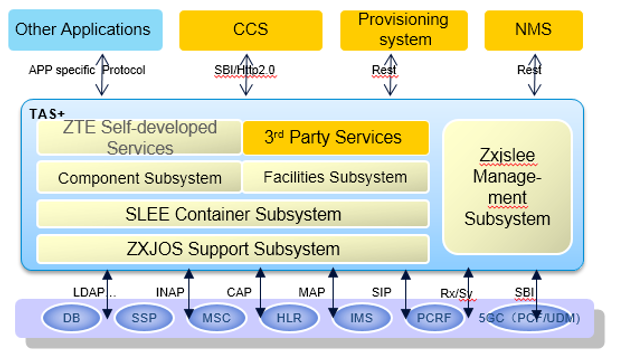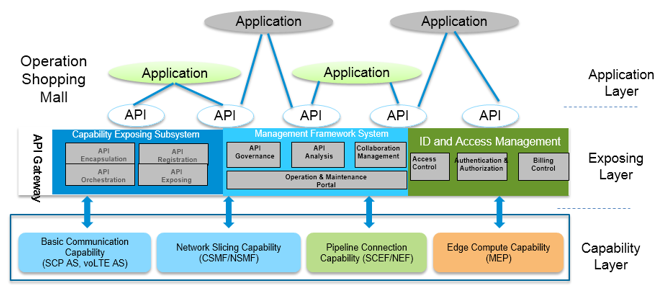I. Development and evolution of mobile communication services
Throughout the development history of mobile communicaton services, from the birth of basic mobile communication services in the 1G era, to the popularization of 2G/3G telecom value-added services, and then to the rapid development of data access services, communication services have penetrated into every aspect of life and closely related to people's lives and work.
With the freezing of the 5G standard, 2019 ushered in the first year of 5G construction. 5G will provide us with an average experience rate of 1Gbps, a peak rate of 10Gpps, more than 1 million connections per square kilometer and an ultra-low air latency of 1ms. With the improvement of network infrastructure capabilities, communication services will also gain new development. Along with the applications of 4K/8K/3D video, and in combination of AR/VR with communication, 3D full-scenario interactive video interaction is also possible, while the deep integration of 5G communication capabilities with industry applications will also lead to profound changes and developments in various industries.
With respect to 5G network, existing communication service products are also facing upgrade requirements to adapt to new networkfeatures and market demands and provide better services and business functions. If NFV cloudization and cloud native are supported as basic requirements, the decoupling of capability from application makes the system more open and integrates with new technologies such as AI and XR to provide new communication functions for providing a fast and flexible platform architecture to help the quick innovation of businesses.
II. ZTE 5G-oriented communication service solution
Based on the long-term practice and technology accumulation in the field of communication, ZTE has launched a comprehensive communication service solution oriented to 5G including audio, video, messaging and data, and a new capability exposing gateway, to help the continuous innovation of communication services under 5G and the in-depth integration of industry applications.
1 Session service solution: ZTE TAS+
Due to its features of bearer and control separation, access independence, and flexible service access, the IMS network gradually replaces the CS network and becomes a unified and converged core network under fixed and mobile networks. Under the 5G network, the session control service based on IMS will become the mainstream.
ZTE TAS+, which is an open service platform solution that is oriented to the IMS network and is compatible with CS at the same time, adopts an open architecture that conforms to the JSLEE specification. It provides rich functional components and development operation and maintenance tools to support the development and operation of converged services of multiple protocols. Its functional components include SBB, Service, Event, Profile, RA, and Lib. For the 5G network, SIP, Http2.0 and other protocol adaptation packages. The DevOps toolset and the API capability exposing interface are provided, so that ZTE TAS+ can be used as a unified service development and operation platform under 5G.
The ZTE TAS+ solution effectively solves the closure of the traditional service platform, and the components from the platform support layer to the business application layer are completely exposed. All the components and services provided by any third party that conform to the JSlee architecture can be loaded and operated, so that the operator can be truly unbonded from single equipment suppliers to maximize the activation of the industrial ecosystem to jointly promote innovation and prosperity of 5G communications services.
In addition to exposing the architecture, TAS+ also provides developers with an Eclipse-based graphical development environment. Developers can use graphical drag-and-drop tools or JAVA voice for development. Rich functional plug-ins greatly reduce the development difficulty and technical threshold. The DevOps tool chain effectively increases the speed of research and development so that new services can be quickly brought to market.

Figure 1 TAS+ Networking Architecture
Typical services that can be developed based on the platform include VoNR basic voice, audio/video ring tone, video conferencing, and rich media communication. Through the addition of protocol adaptation components, more AR/VR-combined video value-added services and data control services can be supported.
2 Data service solution: ZTE vSSC
With the continuous increase of mobile communication data transmission rate, mobile Internet applications have experienced explosive growth. Demands on value-added services for complex processing of data streams are also increasing, such as DPI detection, customized billing, business policy control, content caching, green Internet access, and video optimization. Faced with the more extensive applications of data services and the differentiated needs of vertical industries under 5G, the value-added services in the packet domain will be more diversified and complemented as the basic network to become a powerful supporting means to enhance the terminal access experience and network function.
ZTE vSSC provides a unified platform for data value-added services. Its core point is the open platform architecture, which facilitates the rapid convergence of self-developed value-added services and data value-added services from third parties.
ZTE vSSC provides independent TC, SFC agent, SFC controller and SF business functions. Among them, the independent TC can support the selection of complex DPI identification and service chains, the SFC agent performs routing encapsulation and decapsulation, the SFC controller is responsible for service chain orchestration and policy definition, and the SF performs specific business logic to provide various business functions.

Figure 2 vSSC Architecture
3 API gateway with the brand new architecture
Industry applications belong to the main application field of 5G, including V2X, UAV, and industrial control. Capability exposing technology is a bridge to achieve deep integration of 5G communication capabilities and industry applications.
ZTE API Gateway, which is a lightweight capability exposing gateway, uses a mainstream microservices framework to support the deployment of virtual machines or containers, and can quickly converge new capabilities to provide new APIs. The current converged things include basic communication, intelligent pipeline, network slicing, and edge computing, providing a rich API capability set for industrial applications.
The API Gateway complies with the 3GPP CAPIF capability exposing framework standard, including the IAM identity and access authentication subsystem to implement authentication and authorization, charging control and SLA management for API calls; the management framework subsystem implements the policy and lifecycle management of the capability API. Capability encapsulation and exposing subsystems enable the convergence of capability engines, capability encapsulation and orchestration, and API exposure.
The core point of ZTE API GateWay is its micro-service architecture, and the gateway supports a convenient and fast convergence of new capability engines to provide new capability APIs.

Figure 3 API Gateway Networking Architecture
Conclusion
It is foreseeable that based on 5G and related technology groups such as XR, AI and MEC, the future communication services will be more colorful, and users will gain unprecedented improvement in visual and interactive experience. The continuous innovation of communication services and business models, as well as the deep integration of communication capabilities and industry sectors, will be the hot topics of continuous research in the future.
As the world's leading integrated communications solution provider, ZTE will focus on the research of 5G and even newer generation communication technologies and businesses, provide more advanced communication products and solutions, explore new business models and operating models, and help operators make digital transformation.
ZTE supports AI with full-stack IT offering
5GC Green Engine Solution to Enable Green Internet of Everything in the Dual-Carbon Era
5GC Private Network 2.0 Empowerment and Efficiency Improvement Boosts High-Quality Development of the Industry
5G Empowers Intelligent Mining for High-quality Development of Shaanxi Coal Caojiatan Mining
ZTE and China Mobile embrace digitalization for biodiversity conservation in Panda Reserve
Three Aspects Contribute to ZTE’s Remarkable Breakthroughs in Advanced G4X Server
How 5G Private Networks Are Poised to Transform Enterprises Worldwide: All Scenario Private 5G Helps Operators to Realize Private 5G as a Service
ZTE’s commitment to servers generates robust growth of up to 60 times in past 8 years
ZTE eyes top 5 global server market share
Full-Scenario One-Stop 5G Private Network for Vertical Industries

